Preface:
In the narrower sense, misconception refers to a wrong assumption or opinion or a false belief, whereby the asserting, thinking or believing person considers the wrong thing to be right in each case. In contrast to a lie, where the truth has been deliberately falsified, an error arises unintentionally from false information or wrong conclusions.
Don’t be afraid, you are in the right place, and it is also about mealworms. However, thanks to this term we have this introduction. Actually it is not a worm but a larva, or have you ever seen a worm shed its skin? But what once gets stuck in your head you can’t get rid of it that quickly. So the flour worm will always be a worm and the coconut will always be a nut. Before you have to google now, coconut is actually a stone fruit, but who takes this so exactly?
General:
Darkling Beetles are widespread worldwide and are among the most common cultural successors. Outdoors, like their larvae, they inhabit mulm, rotting wood and bird nests. In the vicinity of humans they inhabit flour and other cereal products and prefer dark and warm places.
Mealworms are still indispensable for feeding all terrarium inhabitants, although they have lost considerable importance. When I started with terraristics about 27 years ago, feeding the terrarium animals was still a real problem. At that time the whole hobby was hardly commercialized and required a lot of personal effort. In summer they used meadow plankton and in winter they fed only mealworms. Fortunately, this has changed today, as the nutritional value table does not reveal much good about the mealworm.
Why should we continue to breed mealworms? My main argument is the independence from supply problems of the feed animal breeders. Often there are fluctuations in the winter months, as many do not ship at all, some only with a considerable extra charge, as the additional effort is considerable. Also I have often experienced that complete breedings have collapsed and one is completely on the “dry seat”. So it is a kind of emergency care, which is operated in a small scale.
Of course the mealworm is now also one of the protein sources in our food. Therefore it is great to breed your own biolarves, always aware of “I know what’s in them”. For all those who like to eat hamburgers and are looking for a recipe, you will find it here.
Anatomy:

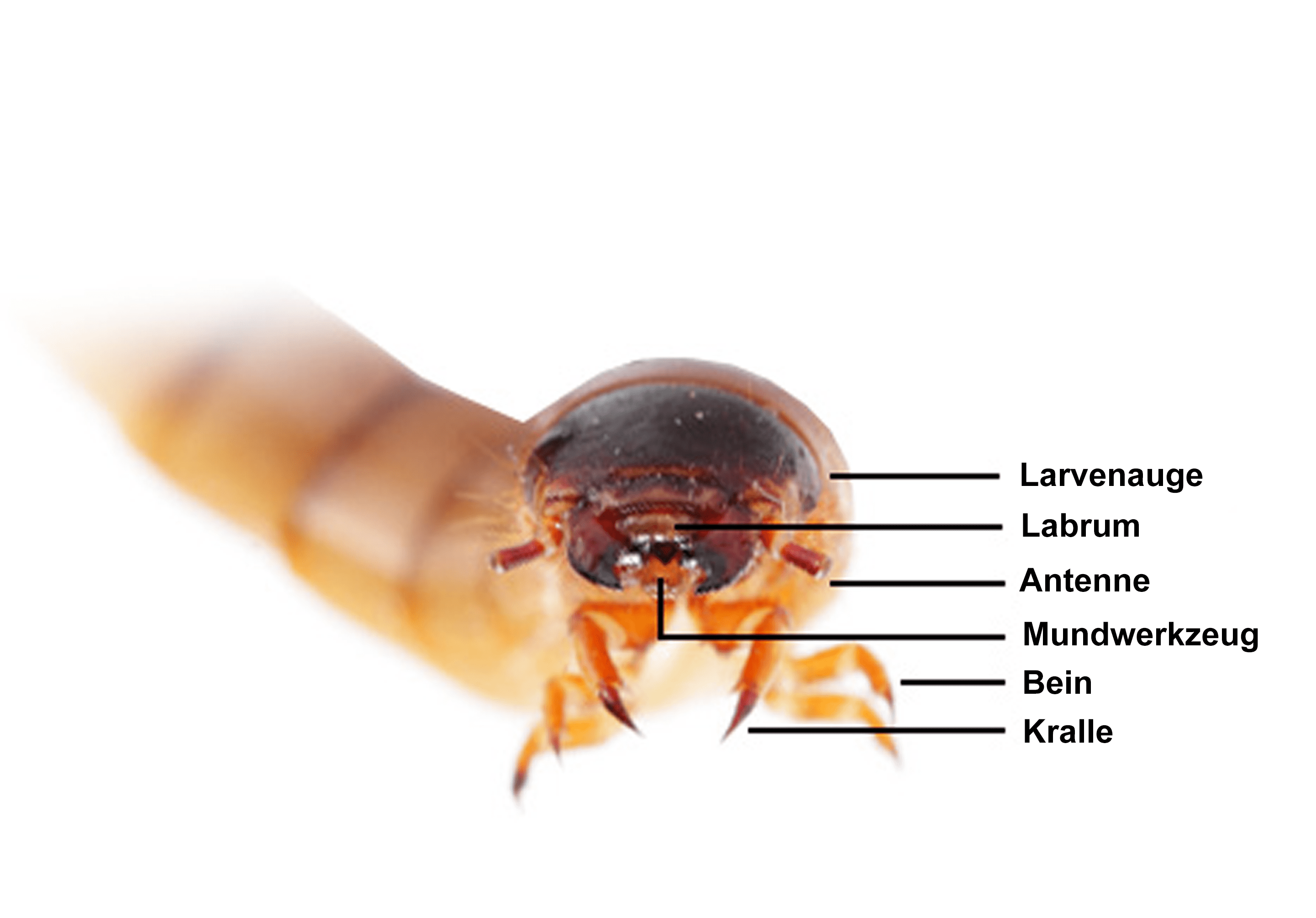
Breeding:
I use BraPlast cans of 1.3 litres as breeding containers, as I rarely feed mealworms. In general you can use all kinds of things, you should only have at least 4 of them. Do not use wood or cardboard, the mealworms will eat their way out. Depending on how big you want to raise the breed, you should adjust your containers. Drawer boxes have proven to be very practical.
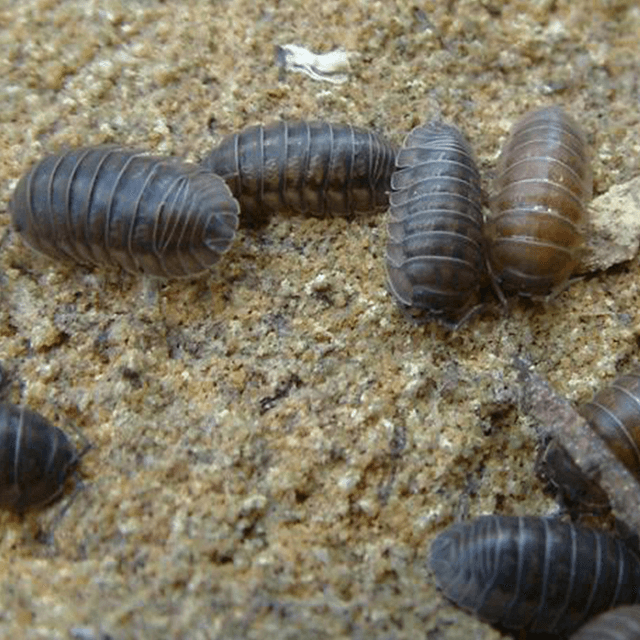
Before you can start with the breeding, a small optimization of the boxes / drawers is still necessary. All boxes need a ventilation surface. I make them Drosophila-tight, so that no fly breeding is formed. I prepare the second box / drawer as follows:
Cut out the bottom, leaving a rim to stick together (min. 1 cm)
Glue wire gauze with a mesh size of 1.5 mm as a floor replacement
Cut out the lid so that the wire gauze base fits perfectly
Development:
The mealworms / meal beetles have a life span of about one year. Of course the duration depends on the temperature and the food. The adult animals have a size of about 30 mm and have shed their skin 5-14 times in their life. With an optimal husbandry, the larvae change to the pupal stage after 2-3 months at the earliest. After a 3 week pupal rest they turn into meal beetles. The complete metamorphosis, i.e. from egg to beetle, takes 11 weeks. Females lay between 100 and 320 eggs during their life. The life span of the beetles is 4 to 6 months.
You should keep the breeding sets at about 23-25°C, because the development time depends on the temperature.
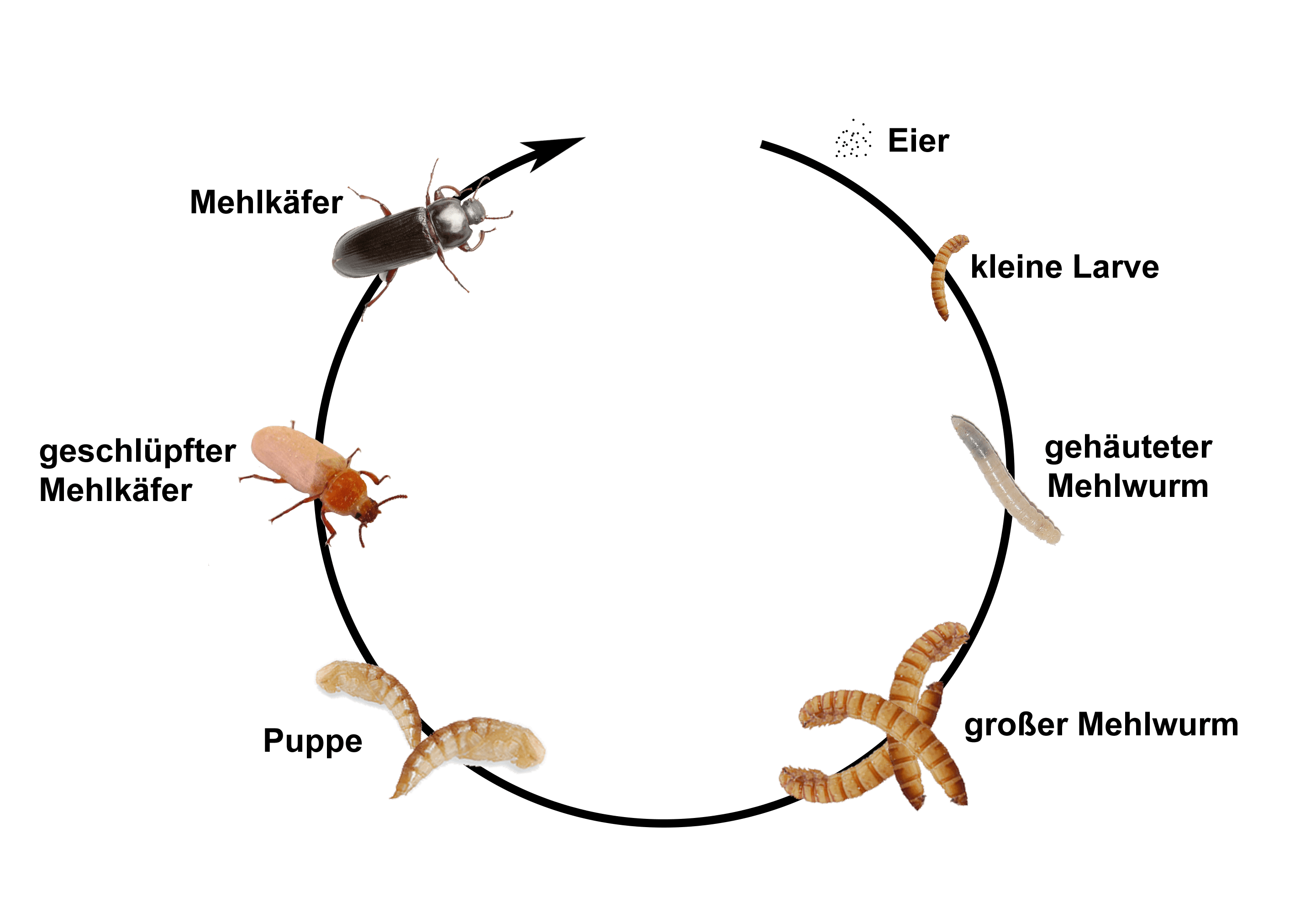
Feeding:
They really eat just about everything. I do not recommend excessively moist food (tomatoes, watermelon, etc.), however, as mould and mites can easily develop there.
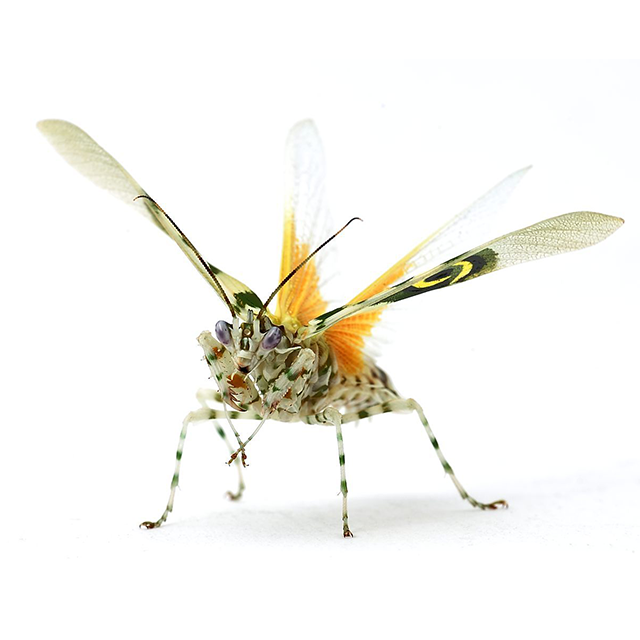
I personally like to use carrots very much. These can be frozen in portions and of course also used for your own tasting. Freezing them has the additional effect that the eggs die on the vegetables or fruit. As a residual recycler you can also simply feed compost waste, but only so much that everything is eaten within 2-3 days. The wet food and fruit is best placed with the soft sides facing the ground so that the larvae can eat from the bottom up. With the black beetle it is the other way round and it is best to offer them the fruit with the cut surface facing upwards. A little brewer’s yeast can also be added to balance the moisture.
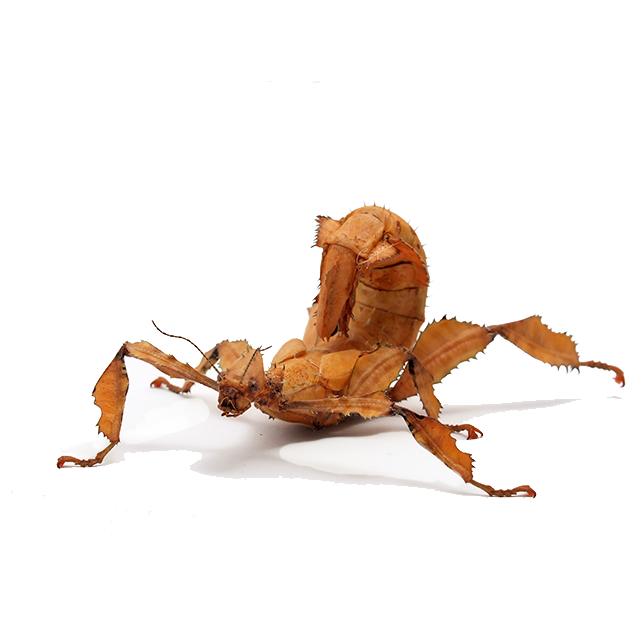
I use bran as the main feed for the mealworms. Bran is a collective term for the residues from seed shells left over from grain processing after sieving off the flour. The higher the quality of the feed we give our mealworms, the better feed our animals get. Flour as the sole feedstuff is too fine-grained. This can cause the animals to suffocate, so it should only be mixed with other food and not fed 100% to the mealworms.
Start breeding:
The top box with the wire gauze for the bottom is the “love box”. There the finished beetles are sorted in. After about 2 weeks they mate and lay eggs. For the black beetles I use oat flakes so that the flakes do not fall through the sieve. There should always be enough moist food in this box. The wire gauze is used so that some of the eggs already fall into the next drawer, but at the latest the freshly hatched mealworms. This has the advantage that they are no longer in danger of being eaten by the cannibalistic mealworms.
The middle box is intended for the breeding of mealworms. There the high quality wheat bran is used. Once a week I offer them moist food in the form of carrots. Depending on the number of animals, regular cleaning is necessary, especially in this box. First you sieve out the excrements, then you clean the whole box with water and detergent.
Due to the different larval stages the mealworm goes through, you have the right food for almost all sizes.
The third container I use as a “doll house”. Beetles and larvae are quite voracious and like to eat each other. Above all they like to get at the dolls, because they are relatively defenseless. To keep such deaths within limits I separate them. For this purpose I sort out all dolls from the lower container every week and put them into the separate box for dolls to rest. There is a thin layer of oatmeal and a damp cloth in the box. The dolls are usually found on the surface of the substrate and can be sorted out easily by hand or with a spoon. In this step I sort out the dead animals. Healthy larvae are bright. Black or grey larvae are dead, these should be sorted out. A certain number of losses cannot be avoided, but this should be kept within limits. If large numbers of pupae or worms turn black, the humidity in the containers is most likely too high or too low. It should be between 50 and 70%.
The lowest container is empty and does not need a lid. I simply put the “doll house” inside, so it is still space saving. When I open the Mealworm Box, I have to put the Beetle Box to the side and as the bottom is only made of gauze, oatmeal crumbs and possibly mealworm eggs or freshly hatched mealworms fall out. Since the mealworm is and remains a storage pest, I take no risk and put the flour beetle box on the empty container during this time.
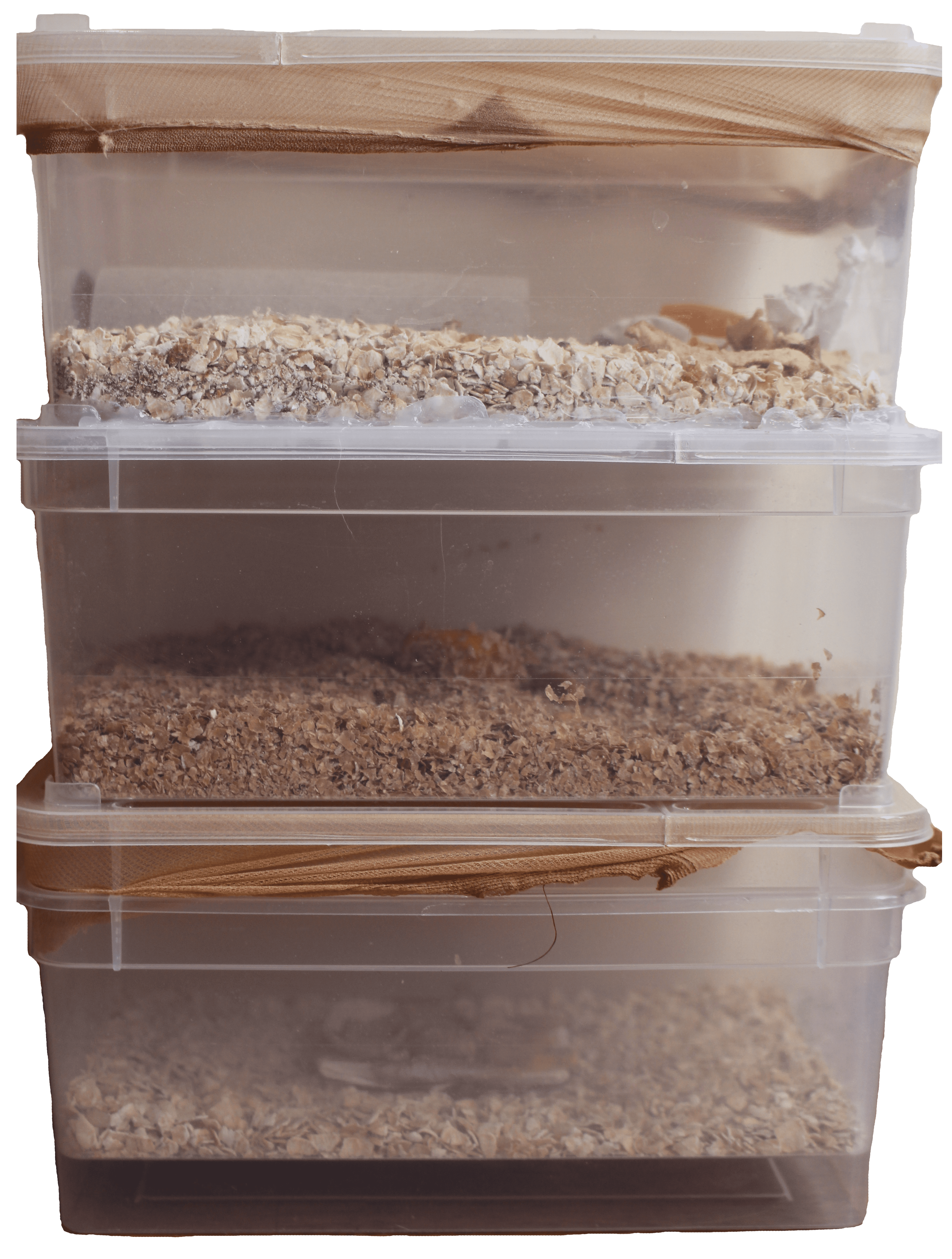
Feeding Mealworms to other animals:
You can put a small box in the insectarium and offer the mealworms there. So the mantid can run there and help itself.
I hand the mealworms exclusively with the tweezers. Hungry praying mantises quickly get used to tweezers.
If she doesn’t want to, you can try the following Cut the flour worm with a pair of scissors and hold the fresh cut off the mantide. Usually she starts to eat quite fast and uses her tentacles for this.


